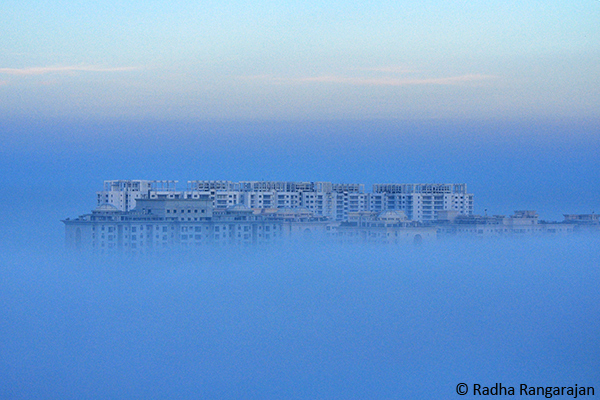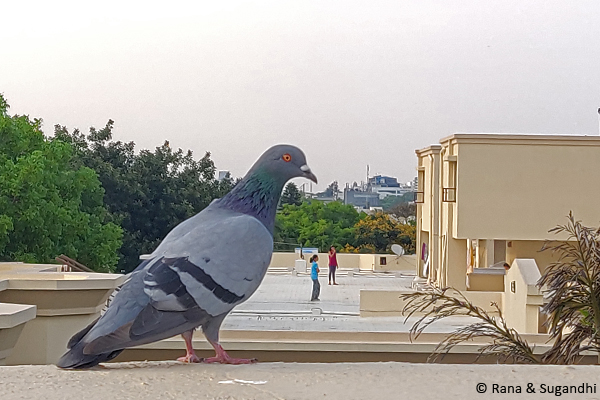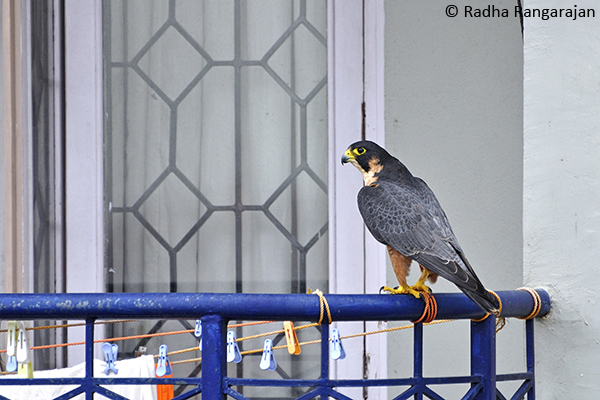“I am hearing many bird calls, particularly barbets and koels these (read – lockdown) days. I had never heard so many bird sounds earlier.” This observation from a friend that came up during a casual conversation set me thinking. My friend was probably hinting that more birds have moved into Bangalore because of reduced human activity and the lower levels of disturbance thereof.
As someone interested in birds, I began reflecting upon my early days of birdwatching and the present scenario. The city certainly has been quieter and the call of the birds (more) audible during the last couple of months. This seems to have come as a surprise, particularly to the uninitiated.
I was also wondering if there are birds that have found the ever-changing urban settings conducive for their survival and if so, how they have used the space. In fact, some interesting research has already gone into understanding how birds have adapted to a noisy urban landscape. I shall not try to explain those findings in this popular article.
Apart from the noise levels, the cityscape today also boasts of many high-rise structures. Are there any birds that have adapted to this spatial change too? Well, the first bird that came to my mind was the infamous Blue Rock Pigeon. I do not recollect seeing this bird frequently during my early years of birding (over 3 decades). One typically saw the Blue Rock Pigeon near places of worship with tall structures. Bangalore, like many other cities, did not have an enviable (sic!) skyline during the initial years of its formation. Today, the scenario is very different. One can, on a misty morning, see ‘sky islands’ in the city with structures towering over everything around.

So much so that, the pigeons have now invaded many of the high rise structures, both residential and commercial. This has led them to being seen as a problem by the inhabitants of these buildings. What is it that the pigeons have found so conducive in the city that they have managed to assume pest proportions?
The natural habitat of the Blue Rock Pigeons as their name suggests, happens to be rocky ledges. This affords them ample safe roosting and nesting opportunities. Now that we have created habitats for them, they have come to be a regular feature of the cityscape. Not to forget, they are also beneficiaries of the human generosity that prompts many a citizen to indulge in the act of feeding these birds.

Pigeons are part of the food chain and it is only natural that their predators also make an appearance, albeit minimally, in the city. Interestingly, the resident cousin of the Peregrine Falcon – the Shaheen Falcon – has been seen repeatedly in the city.

The hills around Bangalore with rocky ledges and outcrops are the natural home of this bird. Among the rocky outcrops it finds ledges to nest. Also, open spaces where it can dive at great speeds in pursuit of its prey. However, a friend of mine has been seeing this bird time and again among a cluster of high rises in the city! Perhaps, it is just a matter of time that this handsome raptor will start residing and breeding amidst these skyscrapers, like does the Peregrine Falcon in New York!
As a birder, when I plan a trip to the hills with rocky outcrops, a tentative list of possible birds to be seen is formed in my mind. One small non-descript bird is usually part of this list – the Dusky Crag Martin. As the name suggests, these creatures are partial to rocky cliffs and crags. Now that the city offers similar situations, they seem to have adapted comfortably to a city living.
In the recent times, I have seen them flying about effortlessly around tall buildings, hawking insects and resting on the many ledges around. They have found wet ground, made pellets of soil and built their lovely mud cups for nesting. These birds now reside amidst the tall structures and seem to visit their nest almost everyday. That is not all. They also put to use the other infrastructure that is part of these structures!
Flocks of the Little Swift too can be seen balling in the vicinity of high-rises. These birds cannot perch and consequently they fly continuously, even collecting nesting material (feathers!) on the wing. This they use to make a nest under eaves of buildings (otherwise under a rocky ledge) where they stick the feathers together with their saliva! It is a sheer pleasure to watch them fly in and out of the nest at seemingly breakneck speeds!
From the above examples, we may be tempted to revel in the belief that high rise structures (very effectively mimic certain natural habitats and therefore) offer a great service to some bird species. At this juncture, let us also pause for a moment and reflect on the opportunity cost – this development comes at a huge price. The reducing green cover and increasing pollution are making life in the city hostile/difficult not only for us but also for a variety of birds, insects and other creatures that share the space with us. That said, I would like to leave you with a question – What can we do in our personal capacities to bring in and support other life (not necessarily only birds) into our midst making our own lives more enjoyable?